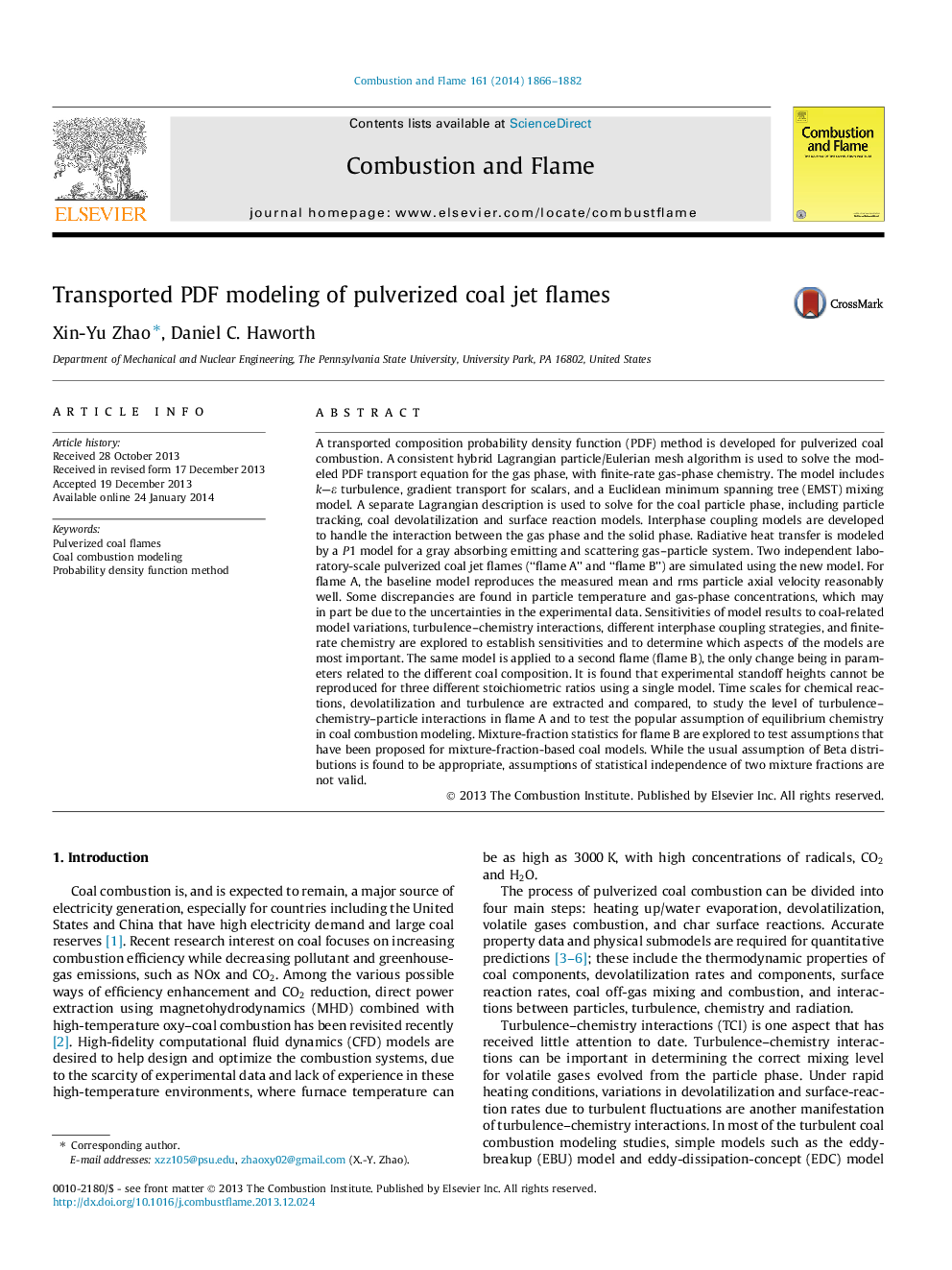| کد مقاله | کد نشریه | سال انتشار | مقاله انگلیسی | نسخه تمام متن |
|---|---|---|---|---|
| 168665 | 457945 | 2014 | 17 صفحه PDF | دانلود رایگان |
A transported composition probability density function (PDF) method is developed for pulverized coal combustion. A consistent hybrid Lagrangian particle/Eulerian mesh algorithm is used to solve the modeled PDF transport equation for the gas phase, with finite-rate gas-phase chemistry. The model includes k–εk–ε turbulence, gradient transport for scalars, and a Euclidean minimum spanning tree (EMST) mixing model. A separate Lagrangian description is used to solve for the coal particle phase, including particle tracking, coal devolatilization and surface reaction models. Interphase coupling models are developed to handle the interaction between the gas phase and the solid phase. Radiative heat transfer is modeled by a P1P1 model for a gray absorbing emitting and scattering gas–particle system. Two independent laboratory-scale pulverized coal jet flames (“flame A” and “flame B”) are simulated using the new model. For flame A, the baseline model reproduces the measured mean and rms particle axial velocity reasonably well. Some discrepancies are found in particle temperature and gas-phase concentrations, which may in part be due to the uncertainties in the experimental data. Sensitivities of model results to coal-related model variations, turbulence–chemistry interactions, different interphase coupling strategies, and finite-rate chemistry are explored to establish sensitivities and to determine which aspects of the models are most important. The same model is applied to a second flame (flame B), the only change being in parameters related to the different coal composition. It is found that experimental standoff heights cannot be reproduced for three different stoichiometric ratios using a single model. Time scales for chemical reactions, devolatilization and turbulence are extracted and compared, to study the level of turbulence–chemistry–particle interactions in flame A and to test the popular assumption of equilibrium chemistry in coal combustion modeling. Mixture-fraction statistics for flame B are explored to test assumptions that have been proposed for mixture-fraction-based coal models. While the usual assumption of Beta distributions is found to be appropriate, assumptions of statistical independence of two mixture fractions are not valid.
Journal: Combustion and Flame - Volume 161, Issue 7, July 2014, Pages 1866–1882
